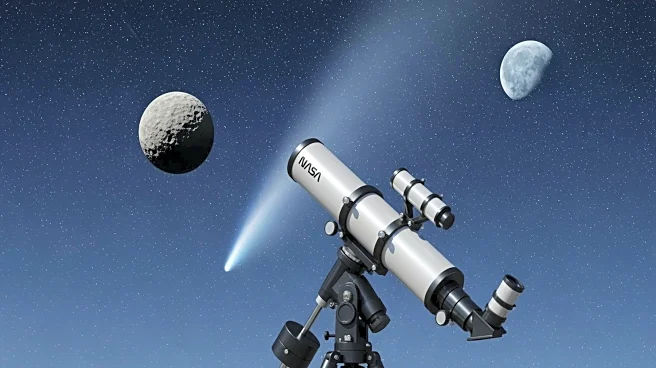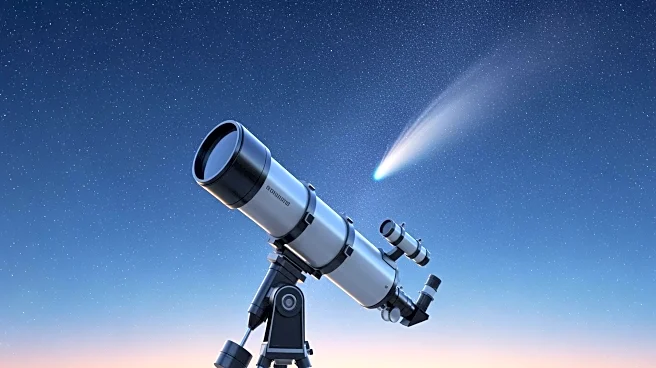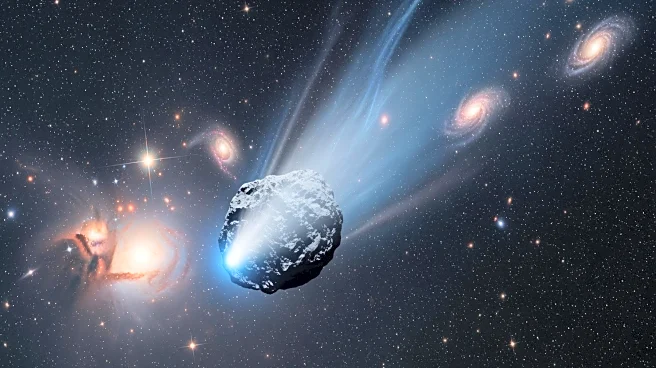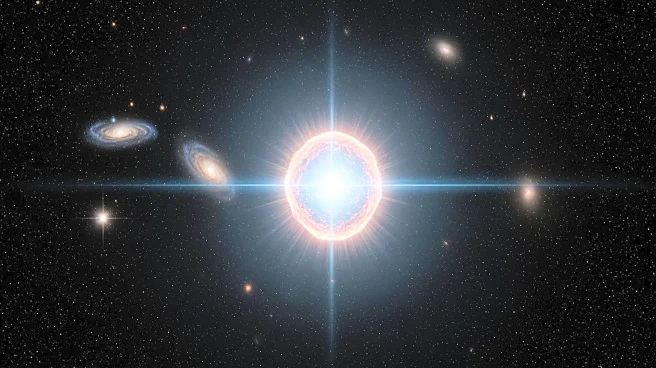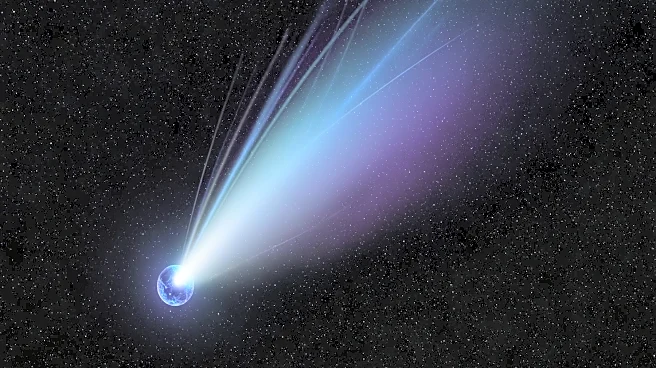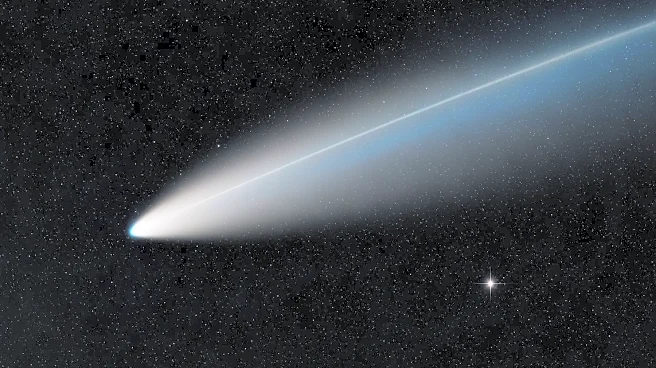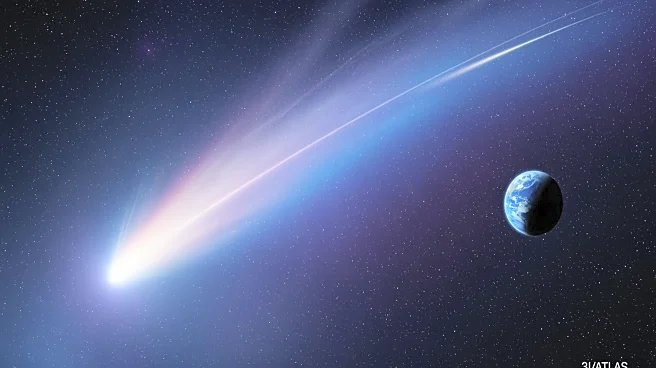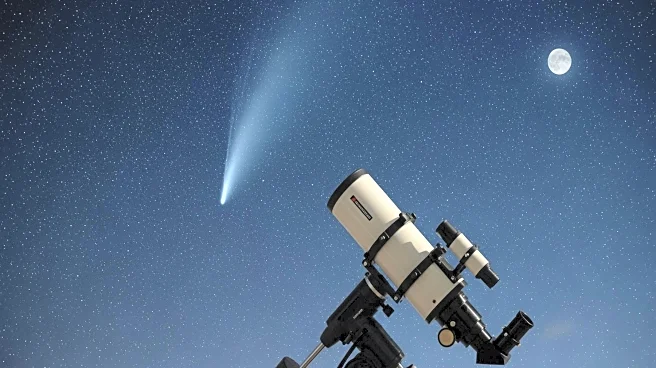What's Happening?
NASA has confirmed that the interstellar object 3I/ATLAS, the third known visitor from beyond the solar system, is a comet. It was first spotted in July and recently reappeared after passing behind the Sun.
The comet is on a hyperbolic orbit, indicating it originated from outside the Sun's gravitational influence and will eventually leave the solar system. NASA's Neil Gehrels Swift Observatory detected water activity, suggesting active outgassing. The comet will make its closest approach to Earth on December 19, 2025, at a distance of approximately 1.8 AU, nearly twice the Earth-Sun distance.
Why It's Important?
The confirmation of 3I/ATLAS as a comet rather than an alien spacecraft dispels speculation and underscores the importance of scientific observation in understanding interstellar objects. The detection of water activity at a significant distance from the Sun provides valuable insights into the composition and behavior of such comets. This event highlights the capabilities of modern observatories and the importance of international collaboration in space exploration. The comet's approach offers a unique opportunity for further study, potentially enhancing our understanding of the solar system's interactions with interstellar objects.
What's Next?
As 3I/ATLAS continues its journey through the solar system, scientists will monitor its behavior and composition using ground-based and space-based telescopes. The comet's closest approach to Earth in December 2025 will provide an optimal viewing window for amateur astronomers and researchers. NASA and other space agencies may release additional data and images as the comet becomes more visible. The scientific community will continue to analyze the comet's trajectory and outgassing patterns to refine models of interstellar comet behavior.
Beyond the Headlines
The study of interstellar comets like 3I/ATLAS can offer insights into the formation and evolution of planetary systems beyond our own. Understanding the chemical composition and physical characteristics of these objects can inform theories about the early solar system and the potential for life elsewhere in the universe. The comet's journey through the solar system may also influence future space missions and the development of technologies for tracking and studying interstellar objects.
